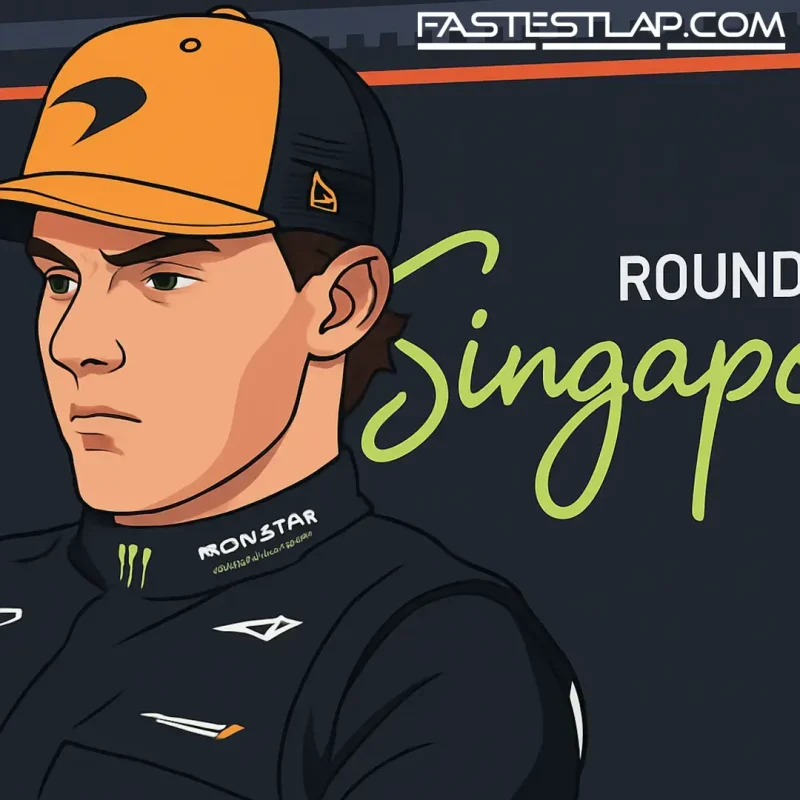Piastri bristles as ‘Papaya rules’ take a hit in Singapore start clash with Norris
McLaren’s neat little credo for intra-team combat — the much-discussed “papaya rules” — boiled down to one line this summer: don’t hit each other. In Singapore, on lap one, that line blurred at exactly the wrong moment.
Lando Norris launched hard and went for a gap into Turn 3, only for it to snap shut. He tagged Max Verstappen’s Red Bull and ricocheted back across into Oscar Piastri. Norris damaged his front wing but muscled on into third; Piastri dodged the wall and reset in fourth, the kind of split-second sorting of fortunes that can define a Sunday in Marina Bay.
Over the radio, Piastri’s frustration was unmissable. “That wasn’t very team-like,” he said, later adding, “Are we cool with Lando just barging me out of the way?” McLaren’s response in the heat of it was pragmatic: Norris, they argued, had to avoid Verstappen; no action would be taken during the race. Piastri didn’t buy it. “If he has to avoid another car by crashing into his teammate, then that’s a pretty **** job of avoiding.”
None of this lives in a vacuum. During the summer break, Piastri was asked by Autosport to define the famous “papaya rules.” He laughed and kept it simple: “It is literally one rule: don’t crash into each other.” That clip resurfaced within minutes of the Singapore start, because of course it did. When you publicly reduce your code to a single sentence, the internet will remember.
Inside the team, the ethos has always been about clarity and trust. “We’ve always been very open about how we go racing,” Piastri said in that same interview. “Trying to not spring any surprises… that’s where things become difficult.” In Italy, things already felt difficult. Norris, running ahead, influenced the pit sequence, lost out with a slow stop, and then received the position back when Piastri was told to yield. Piastri complied, though not without a radio nudge: slow stops are “part of racing,” weren’t they?
None of this is a crisis, but it is a pattern. When the margins are thin, definitions matter. What is avoidance, what is contact, what is “don’t crash” in practice? McLaren have been keen to give both drivers a fair fight this season — and they’ve mostly managed it — but even the best policies meet their match when the front row compresses into a 90-degree left and a Red Bull becomes a pinball bumper.
From the pit wall, the logic is clear enough. The start is chaos. If your lead car bounces off a rival and grazes your other car, that’s not malice, that’s mayhem. You keep your powder dry, you don’t penalize your own driver mid-race, you deal with it after the flag. From the cockpit, it’s more visceral: your teammate hit you and gained; you lost time, track position and a little trust. Both can be true.
The broader context is awkward for narrative and great for McLaren: the constructors’ championship is already wrapped up. That takes the edge off internal flashpoints — no one’s about to blow a title over a Turn 3 scrape. But when you’ve secured the big trophy, culture becomes the story. And right now, the papaya playbook looks a touch more elastic than its branding suggests.
What next? Expect the usual calm British phrasing in the debrief and a little frank Aussie honesty in return. The drivers don’t need a lecture; they need an agreed translation of “don’t crash.” Does it mean no contact under any circumstances? Or is incidental contact at the start an acceptable byproduct of racing for wins? If there’s a carve-out, say so. If there isn’t, police it.
It’s also worth remembering the chemistry here is still strong. Norris and Piastri are quick, cooperative, and — most days — aligned in how they go racing. But elite driver pairings have a way of finding the edges. When one car gambles and the other pays, even unintentionally, those edges feel sharp.
Singapore won’t be the last flashpoint of 2025. It’s how McLaren codifies the aftermath that matters. Do nothing, and the next grey area becomes a darker one. Define the lines, and both drivers know the cost of stepping over them.
For a team that’s already banked the big one, that’s the game now: keep it fast, keep it fair, and make sure “papaya rules” mean the same thing to everyone strapped into a papaya car when the lights go out.




